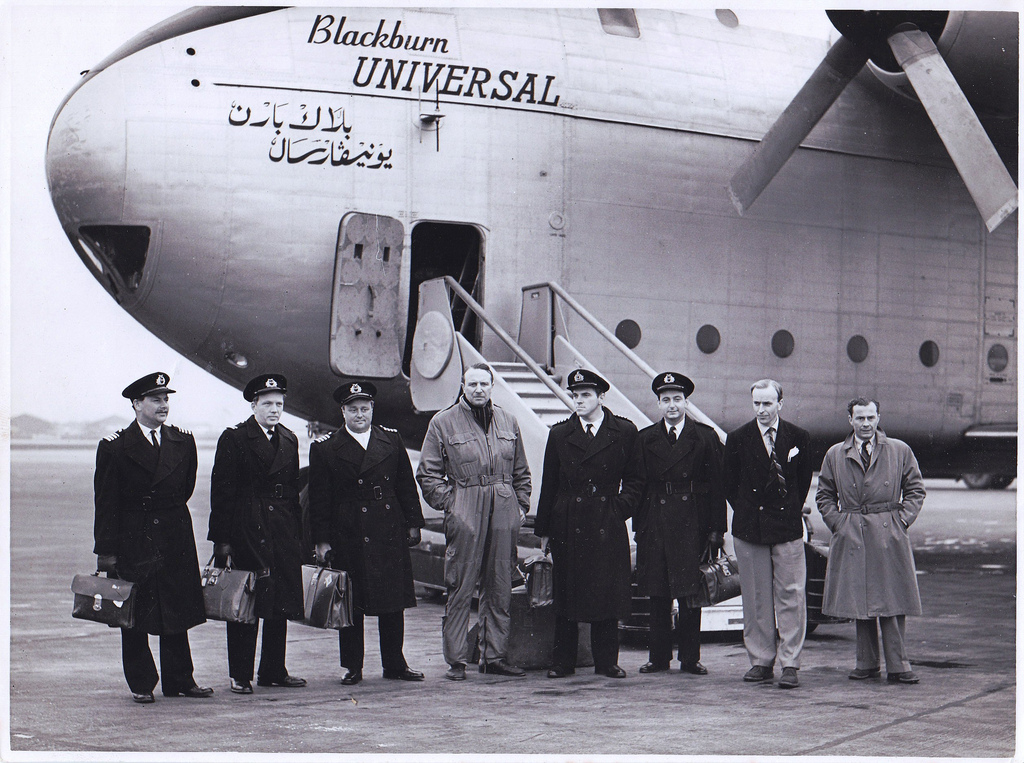Продолжаем тему британской авиации и статей уважаемого коллеги p_d_m.
Войдя в раж после удачи с тяжелым планером Hamilcar на фирме General Aircraft задумали большой транспортный самолет ставший после слияния с Blackburn именоваться Blackburn Beverley. Все 49 выпущенных "Беверли" поступили в RAF — большой и неуклюжий самолет служил отличной платформой для десантирования почти сотни парашютистов, а в объемный фюзеляж впихивалось много разной фигни и при этом в хвостовой части фюзеляжа могли располагаться пассажиры.
Уникальные качества самолета безусловно обращали на себя внимание гражданских перевозчиков. Авиакомпания Silver City Airways, чьи самолеты-воздушные паромы Bristol 170 Freighter летали через Канал, в Ирландию и т.д., естественно заинтересовалась уникумом и в 1952 году была показана в виде макета конфигурация самолета для перевозки шести автомобилей и пяти мотоциклов на двух уровнях в грузовом отсеке и 42 пассажиров в хвостовой балке. Гражданская версия кстати предлагалась еще под прежним названием, присвоенным на этапе работ над самолетом в G.A.L. — Universal Freighter. Непонятно по каким причинам работы по грузопассажирскому варианту для Silver City Airways дальше не пошли.
Но, вероятно, на Blackburn and General Aircraft не теряли надежды реализовать самолет "на гражданке", реклама 1954 года показывает картинку 132местного пассажирского Universal. В случае реализации это был бы уникальный, единственный в своем роде трехпалубный пассажирский самолет!
1. Второй прототип G.A.L.65 Universal Freighter Mk.2/Blackburn B.100 и его экипаж.
Blackburn Universal crew 1955 RAF Lyneham.
The second Beverley, XB260, designated the Blackburn Universal and awarded a civil registration G-AOEK (they called it Oh 'eck!), flew from Brough to Umm Said via Holme-on-Spalding Moor, Lyneham, Tunis and Beirut as part of a joint venture by Blackburn and Hunting-Clan Air Transport. Piloted in turn by G/Capt Hockey, DSO, DFC, Blackburn test pilot Dick Chandler and Capt Greensted MBE, XB260 then carried a spectacular airlift of heavy oil drilling equipment and its full military value was underlined by Marshal of the Royal Air Force, Sir John Slessor, who wrote: "We have got to have a highly mobile reserve of land forces ready to move from A to B with their bulky equipment as quickly as possible, which in my belief is another way of saying 'Beverley.' Taken from Brian Catchpole's book, "Balloons to Buccaneers." Hockey is first on the left, Greensted is third, Chandler is fourth, and Ed Solman, Blackburn's civilian flight engineer, is last.
2. Макет грузопассажирского варианта.
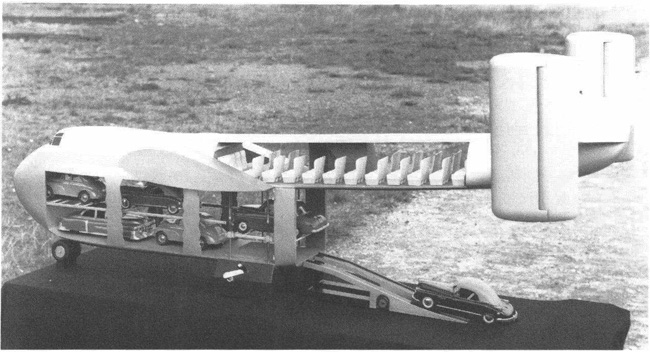
3. Журнал Flight, 1954. Реклама

4. Журнал Flight, 1954. Реклама

5. Чуть крупнее схема размещения пассажиров на трехпалубном Universal.
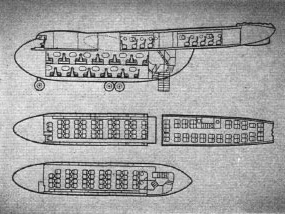
6. и 7. Варианты компоновки гражданской версии. На рис.7 британская фишка 50х с размещением пассажиров "коленками назад" т.е. против направления полета.


8. Грузовой отсек. Можно оценить высоту потолка.
Men of B Squadron, 22 Special Air Service Regiment, inside a Blackburn Beverley on their way to undertake a parachute drop.
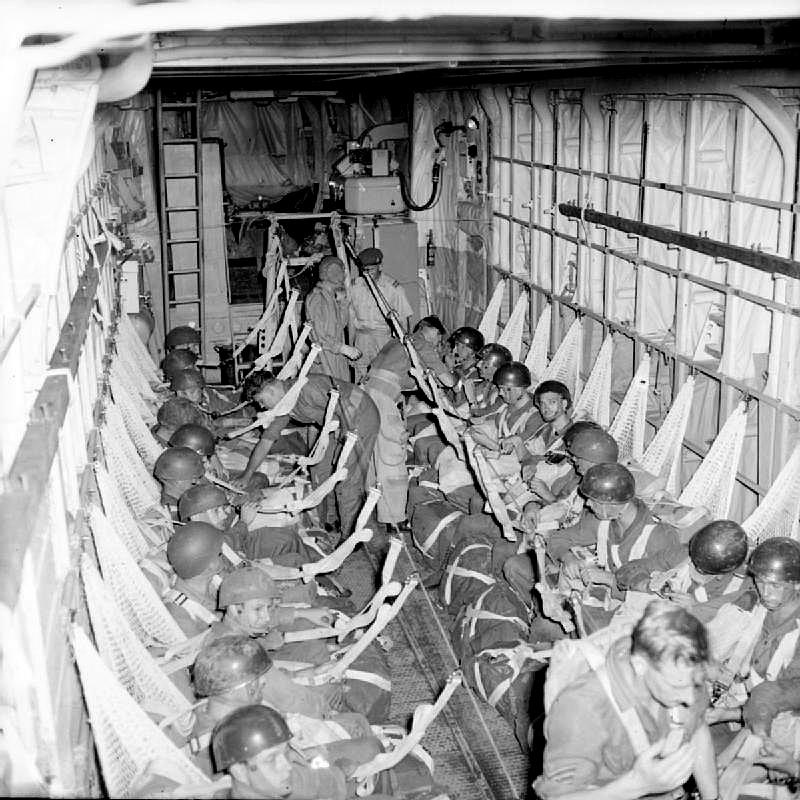
9. Верхний пассажирский отсек в хвостовой балке. Глядя на дурацкие лампы можно решить что фото сделано в сохранившемся до наших дней Beverley.

10. Из этого же люка парашютисты выпрыгивали. Между килем и люком располагался туалет. Описан трагический случай выпадения в люк после посещения нужника — несчастный обслуживал самолет, стоящий на земле и не знал что люк открыт. Он разбился насмерть при падении с высоты. Такие дела! (c)
Parachutists of the RAF Parachute Brigade boarding a Blackburn Beverly aircraft via the rear loading ramp. Possibly during Exercise Red Banner, October 1959.
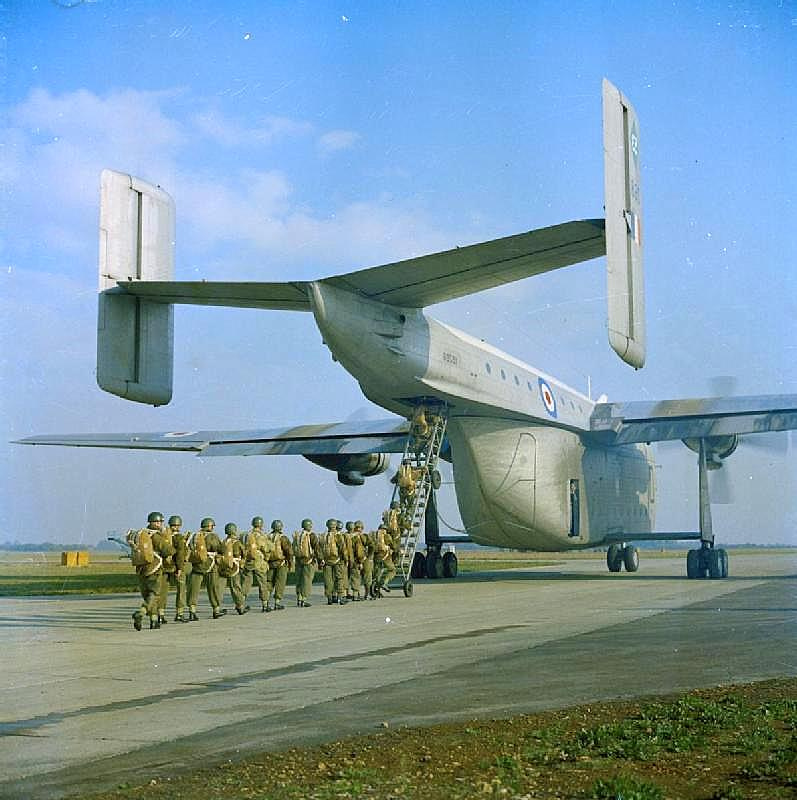
11. Развитие конструкции Universal/Beverley — проект B.107A с носовой и хвостовой рампами и четырьмя ТВД RR Tyne. 1957 год (?).
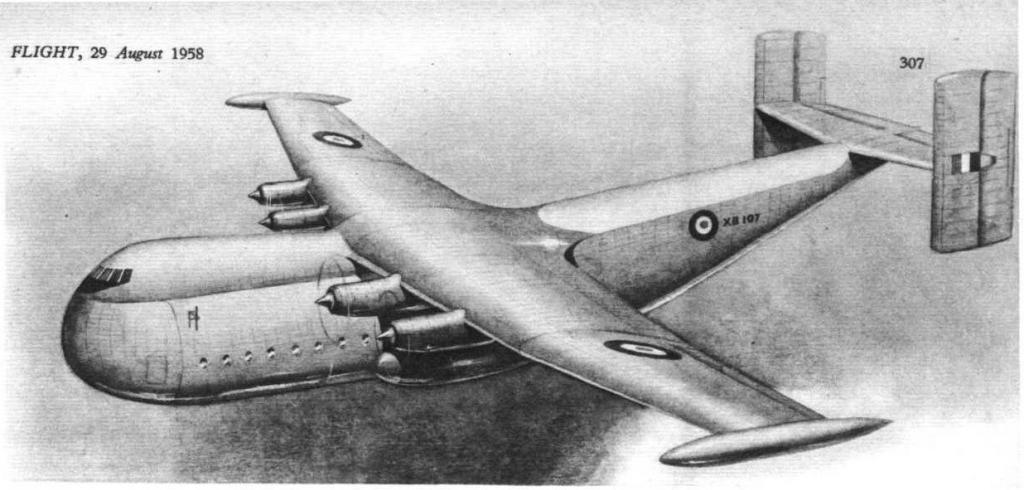
Судя по количеству баек и анекдотов "Bev" у британских авиаторов был культовым самолетом.
A famous aircraft designer saw a dutch barn blow past in a gale. The basic concept of the Beverley was born at that moment.
The original design of the machine was intended to fulfill single-seater specifications, but as full power was required to taxi the aircraft forward at a slow walking pace, another engine was added. The resulting increase in all up weight necessitated the addition of two further engines to enable it to move at all.
By this time, the general dimensions had increased somewhat, and the work was often delayed for several days at a time while the a/c was utilised by the airport manager as a spare hanger for visiting aircraft. This state of affairs continued for such a long time, that by the time the prototype was ready for flight, other types of aircraft were jet powered.
The rather embarrassed designer, fearing to appear behind the times, had the propellers placed much higher than he had originally intended, in the hopes that they would not be noticed. This entailed the raising of the mainplane and the fuselage sides (the production manager raised the roof) and accounts for the immense height of the machine.
As no adequate runway was available, the undercarriage was adapted to take locomotive wheels, and the first take-off was from the Brough – Hull railway. It was in fact airborne by the time it had reached the passenger station at Beverley: hence its name.
A conversion kit for this purpose is still in existence. While the aircraft is in use in this role, the Flight Deck should be at all times be referred to as the drivers cab, and the VHF should be re-crystallized to include the frequencies of Crewe signal box, and the head office of the National Union of Railwaymen.
Spinning the aircraft is not recommended, as the torque reaction involved causes the Earth to rotate in the opposite direction to the spin, to the accompaniment of terse notes from Greenwich Observatory.
The aircraft is extremely versatile, and may be employed in many roles, particularly those, which do not include flying or movement of any kind. It is also highly amenable to modification. For example, wind tunnel tests have shown that the wings could be placed at the bottom, and the wheels at the top, without any appreciable drop in performance.
Taken all in all, the Beverley is an ideal aircraft for a civilian enthusiast with a million pounds, a private oil well, and a total abhorrence of flying.
Интересная тема на форуме www.pprune.org — Тусовка тех кто летал и обслуживал Beverley
источник: http://p-d-m.livejournal.com/255651.html

